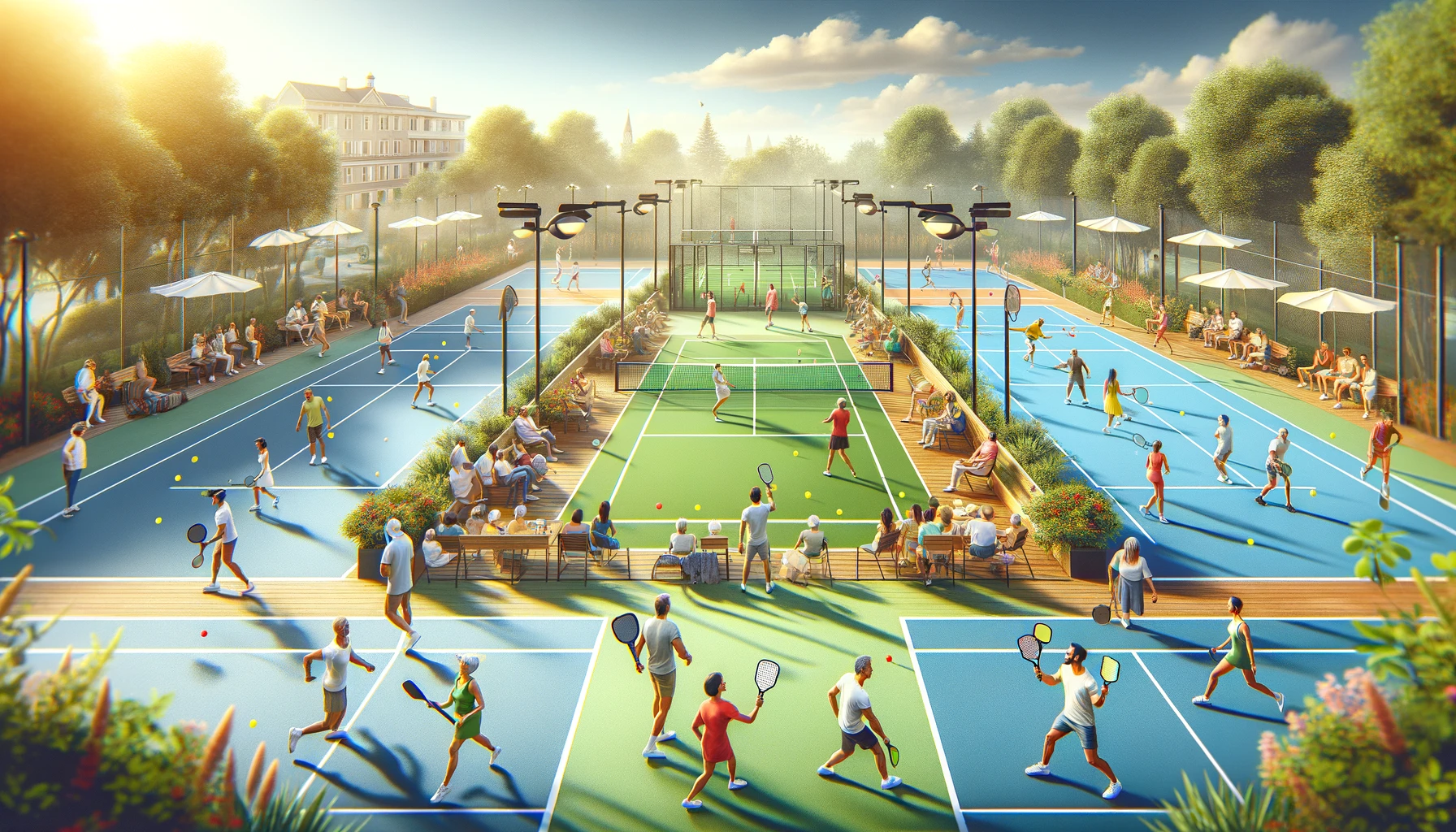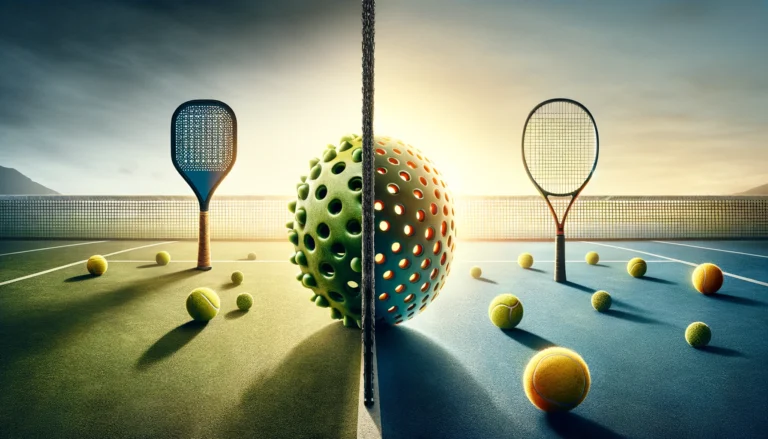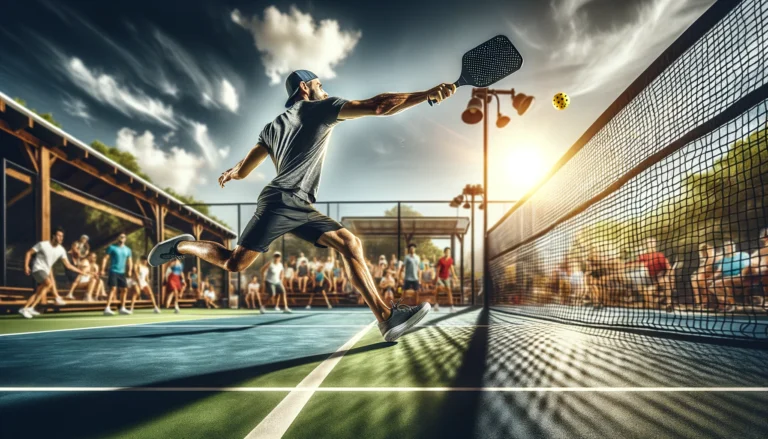Pickleball vs. Tennis: Exploring the Key Differences and Similarities
Pickleball vs. Tennis
In recent years, the popularity of racket sports has surged, with pickleball and tennis leading the way. Each sport offers a unique set of challenges and rewards, attracting enthusiasts from all walks of life. In this article, titled “Pickleball vs. Tennis: Exploring the Key Differences and Similarities,” we will delve deep into what sets these two sports apart and what they share in common.
Pickleball, often seen as a blend of tennis, table tennis, and badminton, has emerged as a favorite among players looking for a fast-paced yet accessible game. On the other hand, tennis, with its rich history and deep roots in athletic culture, continues to be a beloved sport worldwide. Both sports involve rackets and balls, but the similarities and differences extend far beyond the basic equipment.
By comparing and contrasting pickleball and tennis, this article aims to provide insights that will help enthusiasts of both sports appreciate the nuances of each. Whether you’re a seasoned player or a curious newcomer, understanding these aspects can enhance your enjoyment and performance in both games.
The Court Layout and Size
Understanding the Playing Fields
Pickleball courts are smaller than tennis courts, measuring 20 feet wide by 44 feet long, which is less than half the size of a tennis court. This compact size makes the game more accessible and less physically demanding, especially for those who may find the larger tennis court overwhelming.
How to Adapt to Different Court Sizes
- For Pickleball: Practice short, controlled movements and focus on strategic ball placement.
- For Tennis: Utilize the larger space to develop a strong baseline game and improve your fitness levels to cover more ground.
Equipment: Paddles vs. Rackets
Differences in Gear
In pickleball, players use a paddle made from composite materials, which is larger than a table tennis paddle but smaller than a tennis racket. Tennis rackets, made from a mix of materials including graphite for strength and lightness, feature strings that help players control the ball with more precision.
Choosing the Right Equipment for Your Sport
- Pickleball Paddles: Look for a paddle that fits comfortably in your hand and suits your play style, whether it’s power-driven or control-focused.
- Tennis Rackets: Select a racket based on your level of play; beginners should opt for larger head sizes for better ball control.
Rules of Play: Scoring and Serving
Key Rules and Their Impact on Gameplay
Pickleball features a unique scoring system where points can only be scored by the serving side, and games typically go to 11, 15, or 21 points. Tennis uses a traditional love-fifteen-thirty-forty scoring system, with matches often consisting of several sets.
How to Master Scoring and Serving Techniques
- Pickleball: Practice consistent serve techniques to keep your opponent on defense.
- Tennis: Develop a variety of serves, such as the flat, topspin, and slice serves, to keep your opponent guessing and off-balance.
Physical Demands and Accessibility
Comparing the Physicality of Each Sport
Pickleball is generally less demanding on the body than tennis, making it a popular choice among older adults or those recovering from injuries. Tennis, known for its intense rallies and the need for strong physical conditioning, caters to those seeking a rigorous athletic challenge.
How to Stay Fit While Playing Safely
- Pickleball: Incorporate light cardiovascular and strength training into your routine to keep up with the game’s pace without overexerting yourself.
- Tennis: Engage in comprehensive fitness programs that include cardio, strength, flexibility, and agility training to maintain peak physical condition.
Social Aspects: Community and Competition
The Role of Social Interaction in Each Sport
Both sports boast vibrant communities, but pickleball is particularly renowned for its social atmosphere, often featuring mixed doubles play that encourages interaction. Tennis clubs and leagues also offer a strong social network but tend to be more competitive and performance-oriented.
How to Engage with the Community and Compete
- Pickleball: Join local clubs or groups to participate in social matches that also help improve your skills.
- Tennis: Enter tournaments to challenge yourself competitively, and take part in club events to connect with other players.
Conclusion
Pickleball and tennis, while similar in some aspects, offer distinct experiences tailored to different preferences and abilities. Whether you choose the rapid, strategic game of pickleball or the enduring, physically demanding game of tennis, each sport provides unique benefits and challenges. By understanding and appreciating these differences and similarities, players can enrich their sporting lives, forge new friendships, and enhance their physical and mental well-being. Remember, the best sport for you is the one that brings you joy and matches your lifestyle. Embrace the racket, hit the court, and enjoy every moment of your chosen game.







